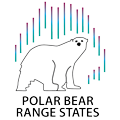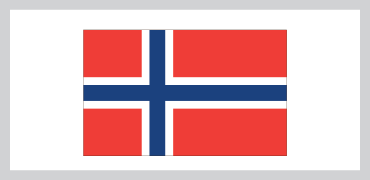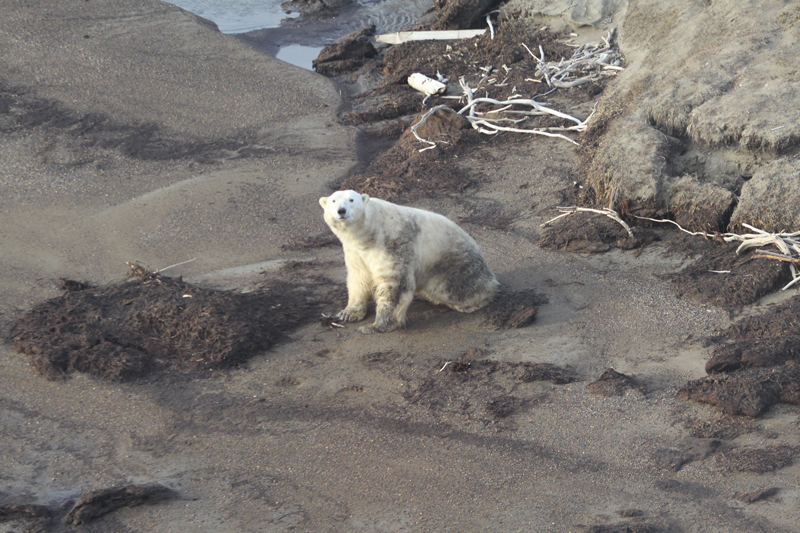 Photo credit: U.S. Fish and Wildlife ServiceThe U.S. Fish and Wildlife Service (Service) is the federal agency responsible for managing polar bear populations in the United States. The United States contains portions of two subpopulations of polar bears: the Chukchi Sea, also known as Alaska-Chukotka, and the Southern Beaufort Sea subpopulations. These subpopulations are shared with the Russian Federation and Canada, respectively.
Photo credit: U.S. Fish and Wildlife ServiceThe U.S. Fish and Wildlife Service (Service) is the federal agency responsible for managing polar bear populations in the United States. The United States contains portions of two subpopulations of polar bears: the Chukchi Sea, also known as Alaska-Chukotka, and the Southern Beaufort Sea subpopulations. These subpopulations are shared with the Russian Federation and Canada, respectively.
Legislation
In the United States, polar bears are federally protected under the Marine Mammal Protection Act (MMPA) of 1972 and the Endangered Species Act (ESA) of 1973. The MMPA establishes a general moratorium on the “taking” of polar bears, although certain activities (i.e., scientific research and enhancing the survival of recovery of a species) may be permitted. Additionally, a special exception under the MMPA allows coastal dwelling Alaska Natives to harvest polar bears for subsistence or handicraft purposes so long as the harvest is not wasteful. Alaskan Native handicrafts made from a polar bear may be sold in interstate but not foreign commerce. The Service works cooperatively with Alaska Native Organizations (ANOs), the North Slope Borough and the State of Alaska to manage polar bears in Alaska.
On May 15, 2008, the Service announced a final rule listing the polar bear as a threatened species under the ESA. The listing is based on the best available science, which shows that loss of sea ice threatens and will likely continue to threaten polar bear habitat. This loss of habitat puts polar bears at risk of becoming endangered with extinction in the foreseeable future, defined as 45 years from the time of ESA listing, the standard established by the ESA for designating a threatened species.
Federal management of polar bears in the Chukchi Sea is also conducted under the Agreement Between the Government of the United States of America and the Government of the Russian Federation on the Conservation and Management of the Alaska-Chukotka Polar Bear Population. This bilateral agreement applies only to the Alaska-Chukotka polar bear population.
Habitat Protection
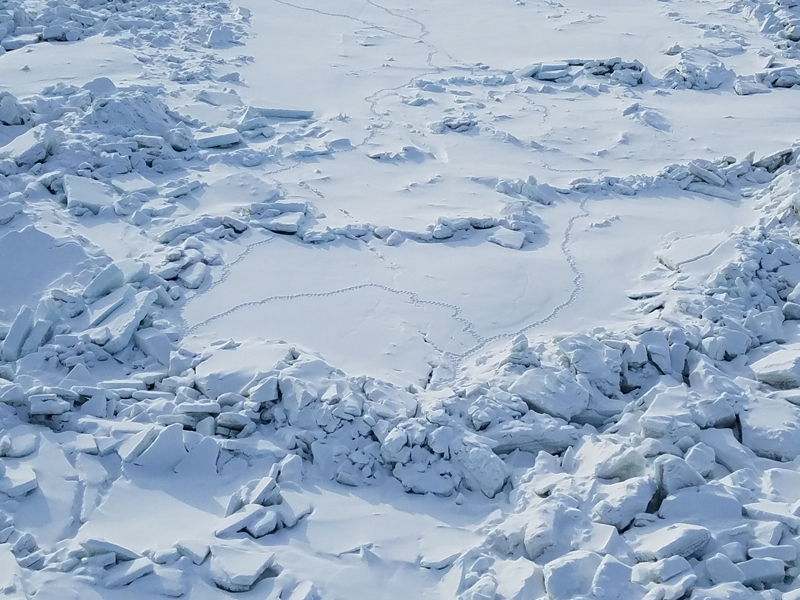 Photo credit: U.S. Fish and Wildlife ServiceBoth the U.S. MMPA and the ESA have an emphasis on ecosystems. Under the MMPA, the goal is to ensure polar bears are maintained as a significant functioning element in the ecosystems of which they are a part. Further, the ESA requires that the Service designate critical habitat for ESA-listed species, when practicable. On December 7, 2010, the Service designated approximately 484,734 km2 (187,157 mi2) as critical habitat for the polar bear in three general categories: sea ice habitat, barrier island resting habitat, and denning habitat.
Photo credit: U.S. Fish and Wildlife ServiceBoth the U.S. MMPA and the ESA have an emphasis on ecosystems. Under the MMPA, the goal is to ensure polar bears are maintained as a significant functioning element in the ecosystems of which they are a part. Further, the ESA requires that the Service designate critical habitat for ESA-listed species, when practicable. On December 7, 2010, the Service designated approximately 484,734 km2 (187,157 mi2) as critical habitat for the polar bear in three general categories: sea ice habitat, barrier island resting habitat, and denning habitat.
Additionally, the Alaska National Interest Lands Conservation Act (ANILCA) created or expanded National Parks and Refuges in Alaska, including the Arctic National Wildlife Refuge (NWR). The Arctic NWR includes significant polar bear denning and resting habitat areas used by the Southern Beaufort Sea subpopulation of polar bears.
Management System
Conservation activity in the United States is governed by the MMPA and the ESA. An important part of polar bear conservation in Alaska is co-management with Alaska Natives who live in polar bear habitat and harvest polar bears for subsistence purposes. The Alaska Nanuuq Commission was the Service’s primary ANO co-management partner from 1994 to 2016. The Service is currently seeking a partnership with an ANO to represent Alaska Native subsistence polar bear hunters in Alaska on matters concerning the conservation and sustainable subsistence use of polar bears.
For the Southern Beaufort Sea population, subsistence hunting of polar bears is regulated voluntarily through an agreement between the Inuvialuit of Canada and the Inupiat of Alaska, which calls for management based on sustainable yield. The Service partners with the North Slope Borough on research and harvest management activities which, in turn, further the purposes of the Inupiat/Inuvialuit Agreement of 1988.
Another important component of polar bear conservation is having reliable scientific information upon which to base sound management. In order to better understand the status of polar bears in the U.S., the Service works in partnership with the U.S. Geological Survey and others to better understand polar bear population and status dynamics. The Service has the lead for research on the Chukchi Sea subpopulation and the U.S. Geological Survey has the lead for research on the Southern Beaufort Sea subpopulation.
Harvest and Trade
Coastal-dwelling Alaska Natives may harvest polar bears for subsistence purposes as authorized by the MMPA. The Service monitors harvest through local taggers in communities hired through the Marking, Tagging, and Reporting Program. Hunters are responsible for tagging the skull and hide of harvested bears within 30 days of harvest.
Harvest management of the Chukchi Sea polar bear subpopulation is addressed by the Agreement between the United States and the Russian Federation on the Conservation and Management of the Alaska-Chukotka Polar Bear Population, which entered into force for the United States in 2007. This Agreement allows both the United States and Russia to formally address polar bear harvest issues, including establishment of hunting quotas, with involvement from Native users. In 2010, a sustainable quota of no more than 58 polar bears per year, of which no more than 19 animals may be female, was established for the removal of polar bears from the Alaska-Chukotka subpopulation. The quota is currently voluntary and has not yet been implemented or enforced. The Service is currently seeking to enter into a cooperative agreement with an ANO for the purposes of conservation and management of polar bears in Alaska. Once established, the ANO and the Service will work to establish a timeline for harvest quota implementation and enforcement.
Since 1988, polar bears in the Southern Beau fort Sea have been managed under the Inupiat-Inuvialuit Agreement between Alaska North Slope Borough residents and the Inuvialuit Game Council in Canada. This voluntary agreement establishes a harvest quota and calls for management based on sustainable yield. Additionally, this Agreement prohibits hunting using aircraft or large motorized vehicles and calls for the protection of females with cubs and denning bears.
National Action Plan
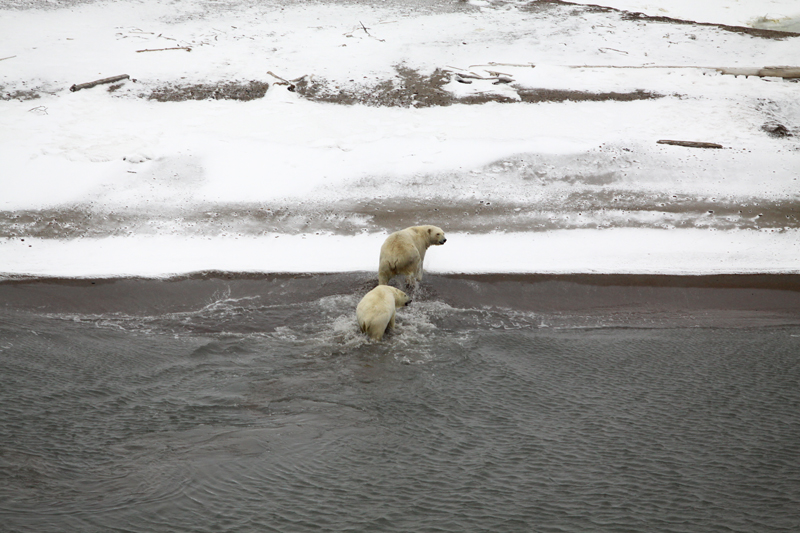 Photo credit: U.S. Fish and Wildlife Service
Photo credit: U.S. Fish and Wildlife Service
Subsequent to the listing of the polar bear under the ESA in 2008, the Service formed a polar bear Recovery Team, consisting of a diverse group of stakeholders, led by the Service, and tasked the Team with the development of a Conservation Management Plan for polar bears. The Polar Bear Conservation Management Plan was released by the Service in 2016. The Plan includes prioritized research and monitoring actions to address key uncertainties and build upon existing baseline data for the polar bear. It also identifies management actions necessary to address identified threats.
For additional information related to polar bear management in the U.S., please visit the U.S. Fish and Wildlife Service's polar bear web page.
